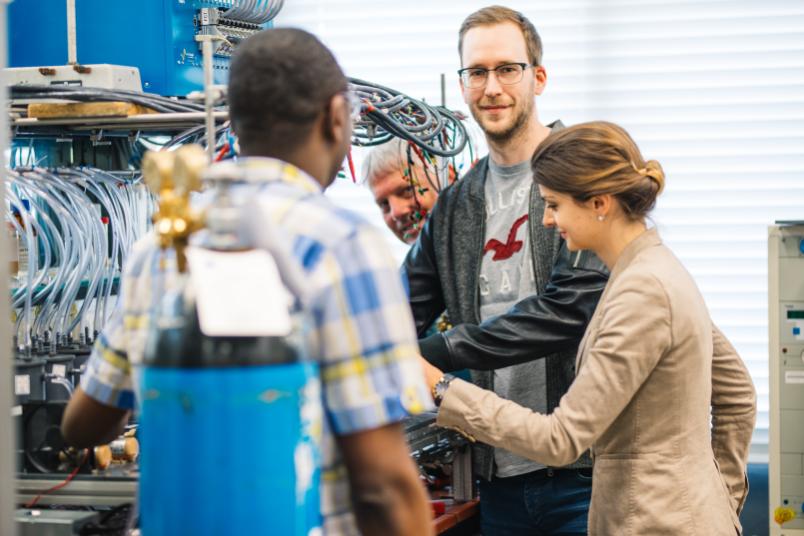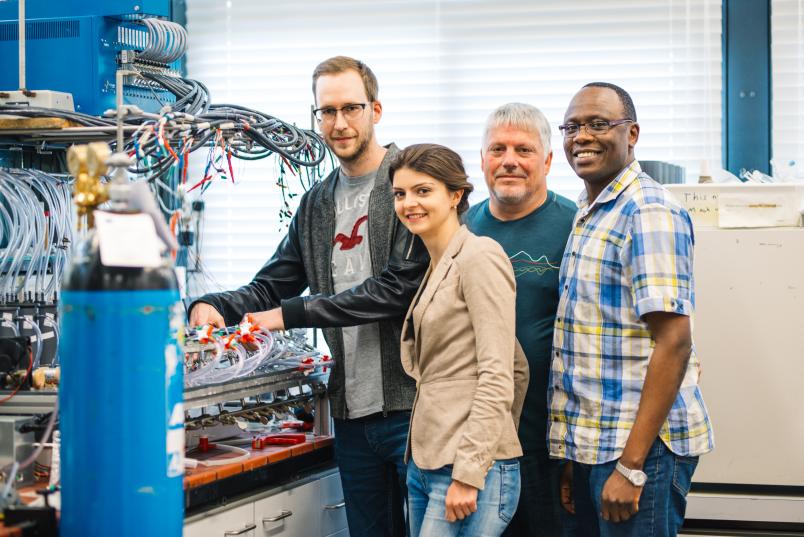
Chemistry
Self-healing catalyst films for hydrogen production
Chemically aggressive conditions prevail during the manufacture of hydrogen from water. This wears out the catalysts used. It would be practical if they were to regenerate themselves.
RUB Chemists have developed a catalyst for hydrogen production with self-healing properties. Hydrogen is considered an energy source of the future. However, finding stable and efficient catalysts to synthesise it is a challenge. This synthesis takes place using water electrolysis, with hydrogen created at one electrode and oxygen at the other. The electrodes are covered with a catalyst film, which is attacked during the reaction and becomes less effective.
A team involving Stefan Barwe, Prof Dr Wolfgang Schuhmann and Dr Edgar Ventosa from the Bochum Centre for Electrochemical Sciences added catalyst nanoparticles in the form of a powder to the solution, which surrounds the electrodes. They pumped the particles through the electrode chambers, where they deposited on the electrode surface. The catalyst film thus forms by itself.

Via the same mechanism, the catalyst surface regenerated during the reaction. New nanoparticles from the solution moved to the electrodes, where they freshened up the worn catalyst film.
The team from the cluster of excellence Resolv reports on this in the journal Angewandte Chemie International Edition.